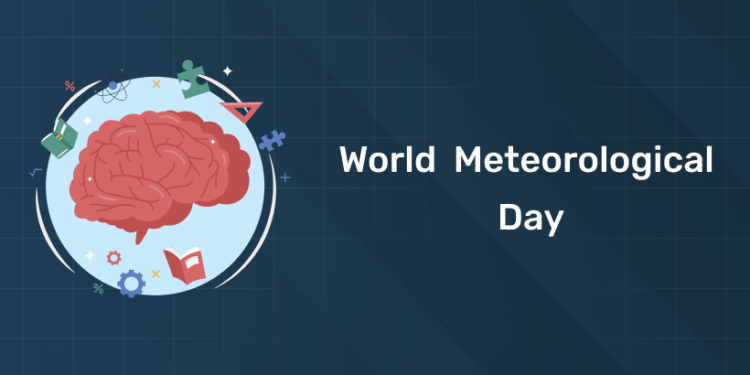Table of Contents
World Meteorological Day is observed annually on March 23 to celebrate the role of meteorology in protecting lives, property, and the environment. It highlights the importance of weather, climate, and water in shaping our world.
The day marks the establishment of the World Meteorological Organization (WMO) on March 23, 1950. The WMO, a specialized agency of the United Nations (UN), promotes international cooperation in meteorology, hydrology, and climate science.
World Meteorological Day 2025 History
In 1873 the first weather organization named International Meteorological Organization was formed to exchange information about weather. On 23 March 1950 it was replaced by World Meteorological Organization (WMO) and to commemorate the creation of this organization World Meteorological Day is being observed every year since 1961. WMO has 193 member states and territories. World Meteorological Organization, which is a specialized agency of UN, coordinates with member nations in the fields of meteorology, operational hydrology, and Earth sciences for the security of their population. The WMO facilitates free and unrestricted exchange of data and information, products and services in real- or near-real time on matters relating to safety and security of society, economic welfare and the protection of the environment.
World Meteorological Day 2025 Significance
1: Who was the first woman President of India?
World Meteorological Organization observes the day to remind people of the role played by the earth in providing a peaceful haven for it’s inhabitants and also serves as an eye opener towards the actions of the world population that causes disruption to this balance. Since it’s inception, WMO has worked with it’s member nations to study the impact of weather, reduce the risk of weather related disasters and to develop weather and climate services in order to make the world a better place.
Free UPSKILLING Courses!
Take your first step toward mastering in-demand skills, acing interviews, and securing top-tier jobs with Entri's free upskilling courses.
Start Learning!World Meteorological Day 2025 Theme
The theme for World Meteorological day for the year 2025 is ‘Closing the Early Warning Gap Together‘.
- 2024: At the Frontline of Climate Action
- 2023: Early Warning and Early Action
- 2022: Early Warning and Early Action
- 2021: The ocean, our climate and weather
- 2020: Climate and water
- 2019: The Sun, the Earth and the Weather
- 2018: Weather ready, climate smart
- 2017: Understanding clouds
World Meteorological Day 2025 Activities
World Meteorological Day is celebrated by member nations every year with events like exhibitions and symposia for meteorological professionals, conferences, the public and community leaders. Some events aim to get the media attention and raise the meteorology’s profile. Also, many prizes for meteorological study are announced or presented close or on World Meteorological Day. Many countries issue special postage stamps to celebrate this day. The stamps usually reflect the theme of the event or mark a nation’s meteorology achievements. Photo competitions based on the theme of the year are also conducted.
World Meteorological Day 2025 Quotes
- “A sky without clouds is a meadow without flowers, a sea without sails.” — Henry Thoreau
- “Meteorology has ever been an apple of contention, as if the violent commotions of the atmosphere induced a sympathetic effect on the minds of those who have attempted to study them.” — Joseph Henry
- “Weather forecast for tonight: dark. Continued dark overnight, with widely scattered light by morning.” — George Carlin
- “Wind, earthquake, fire—meteorology, seismology, physics—pass in review, as we have been reviewing the natural forces of evolution; the Lord was not in them. Afterwards, a stirring, an awakening in the organ of the brain, a voice which asks “What doest thou here?” — Sir Arthur Stanley Eddington
- “Iris from sea brings wind or mighty rain.” — Empedocles
Free UPSKILLING Courses!
Take your first step toward mastering in-demand skills, acing interviews, and securing top-tier jobs with Entri's free upskilling courses.
Start Learning!World Meteorological Day 2025 Quiz
What is the atmospheric layer where most weather occurs?
a) Thermosphere
b) Mesosphere
c) Troposphere
d) Stratosphere
Where is the ozone layer?
b) Mesosphere
c) Troposphere
d) Stratosphere
The hydrosphere contains:
The most common gas in our atmosphere is:
The tool used to measure wind speed is:
Radiation is the transfer of thermal energy by:
a) Electromagnetic radiation
b) Ultraviolet radiation
c) Direct contact
d) Circulation of a liquid or gas
The instrument used to measure air pressure is called:
b) Wind Vane
How many states are members of World Meteorological Organization?
What is a devastatingly large wave that moves inland from the coast called?
a) Tsunami
b) Hurricane
c) Whirlwind
d) Magna aqua
Ans: a) Tsunami
With the weather, climate and water experiencing frequent and extreme changes, the world population is exposed to multiple climate hazards than ever before. Greater coordination between national meteorological and hydrological services, disaster management authorities and development agencies is vital for better prevention, preparedness and response to these calamities.











